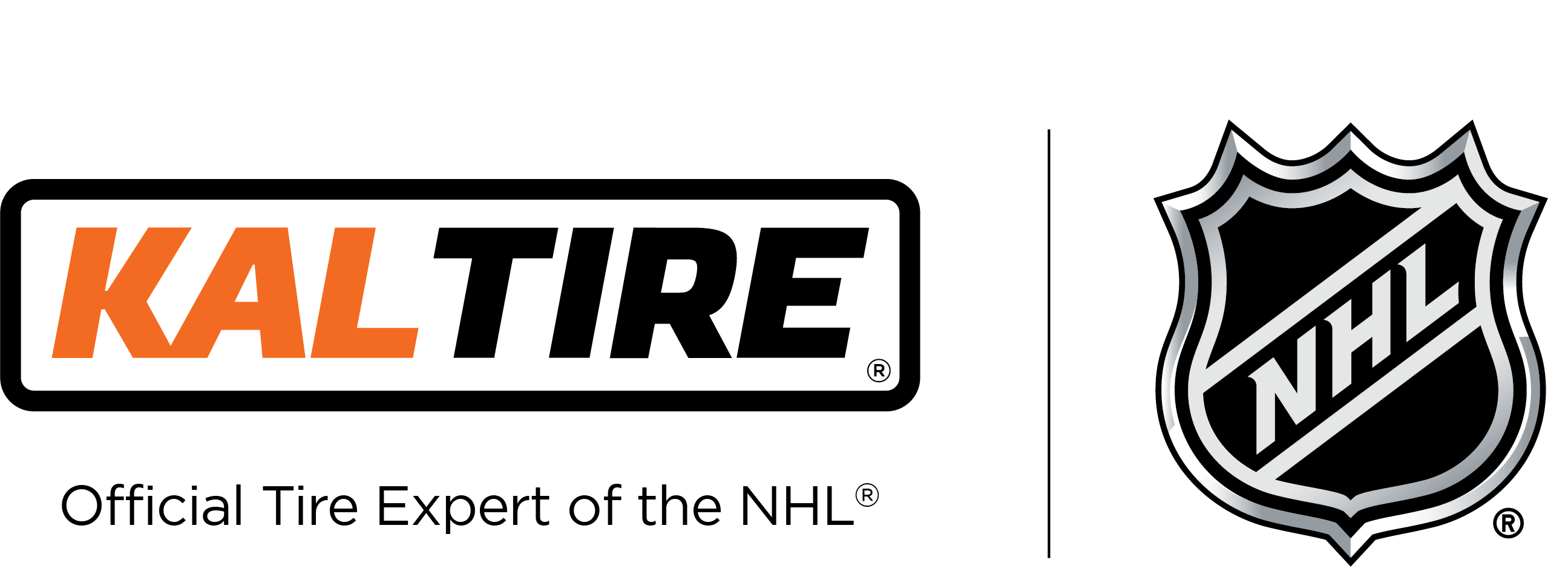Vernon, BC - Tuesday, April 8, 2014
Awareness campaign educates drivers for safe summer roads
How many more metres does it take for a vehicle to stop when a child darts onto the road if the speed rating of the tires has been downgraded? How much closer are drivers to experiencing a blowout on hot summer roads when they’ve bought tires online with the wrong speed rating? As thousands of Canadians are about to switch to summer tires, Kal Tire is using some startling test drive results to help educate drivers about one of the most important and least understood aspects of a vehicle’s safety: tire speed rating.
“Heat is your tire’s number one enemy,” says Hull. “The performance rating of a tire has a big impact on how well a tire can get rid of heat. With a worn or low speed-rated tire in the heat of summer—whether you’re on your morning commute or on your way to the cottage—you’re compromising braking and traction at the least, and risking a blowout at the worst.”
“Speed rating isn’t just about speed,” says Carey Hull, director, retail products, Kal Tire. “It’s also about handling—how your tires help your vehicle to swerve and miss a deer, or stay on a highway ramp in the rain. The way your tires perform in those situations could save your life. That’s why we should think of tire speed rating as a tire’s ‘performance rating.’”
Speed ratings for tires are identified by an alphabetic code. For most passenger vehicles, the recommended rating is a letter between ‘S’ and ‘Y,’ which can be found at the end of the tire size on a tire’s sidewall. This letter indicates the maximum speed a tire can go in conjunction with a load carrying capacity. Speed ratings were created in the 1960s so European drivers would know how fast they could safely drive their vehicles without risking tire failure. Since then, tire speed ratings have also come to indicate how a tire will perform—how it’ll brake, grip around corners, give stability and get rid of heat.
To illustrate how much of an impact performance rating has on safety and handling, Kal Tire recently conducted tests with two identical vehicles—one equipped with higher ‘V’ rated tires, and the other with lower ‘S’ rated tires. The Kal Tire test event included steering response, emergency braking, cornering grip and heat generation. Here are just some of the results:
- In a hard-braking test to simulate an emergency situation, both vehicles were driving at 100 kilometres per hour prior to braking. The lower ‘S’ rated tire was still going almost 25 km/hr when the higher ‘V’ rated tire stopped. The ‘S’ rated tire took 39 metres to stop; the ‘V’ rated tire stopped in 35 metres.
- In a heat build-up test to simulate summer driving, after a run through the test course, a pyrometer showed the ‘S’ rated tires had temperatures of 39C/27C (outside/inside). This indicated the tire was riding on the shoulder when cornering, providing a smaller contact patch with the road. The ‘V’ rated tire had temperatures of 34C/32C (outside/inside), indicating an even contact patch with the road for better grip and better heat dispersement across a larger area of tire.
“Heat is your tire’s number one enemy,” says Hull. “The performance rating of a tire has a big impact on how well a tire can get rid of heat. With a worn or low speed-rated tire in the heat of summer—whether you’re on your morning commute or on your way to the cottage—you’re compromising braking and traction at the least, and risking a blowout at the worst.”
Many drivers aren’t aware of all the ways their safety depends on the performance rating of their tires, which is concerning because more and more drivers are researching and shopping for tires online without knowing the tire speed rating required for their vehicle.
A single tire size can come in multiple speed ratings, and drivers aren’t always aware of the recommended original equipment (OE) specifications. Installing lower speed-rated tires means they’ll flex and squirm under pressure, causing heat build-up and compromising traction and tire life—situations that can lead to blowouts. Tires with recommended or higher speed ratings perform better to help keep your vehicle on the road.
Some drivers, especially drivers who own economy vehicles and need new tires, are also trying to convince tire dealers to install tires that have a downgraded speed rating in order to save a few dollars. More and more economy vehicles are factory installed with high speed-rated tires, which is a benefit because drivers are getting superior performance, but they can be surprised about the cost when it’s time to replace those tires.
“The handling and safety of your vehicle depends on driving with tires that match or exceed your OE specifications because of the way your vehicle was engineered to drive—your suspension was calibrated with a specific performance rating in mind,” says Hull. “You can always upgrade for better performance, but if you downgrade your tire’s performance rating, it compromises the way your tires respond to both everyday and emergency situations.”
About Kal Tire
Kal Tire is Canada’s largest independent tire dealer and North America’s largest commercial tire dealer. Kal Tire Mining Tire Group is a global leader in mining tire service and supply, operating on more than 150 mine sites in 20 countries across five continents. The company has warehouse facilities strategically located across Canada servicing over 250 Kal Tire retail and commercial stores. As the largest truck tire retreader in Canada, Kal Tire owns and operates 10 truck tire retread facilities plus an additional four earthmover retreading facilities are located in Canada, the United Kingdom and Ghana, West Africa. The company employs more than 5,400 team members.
http://link.brightcove.com/services/player/bcpid72857933001?bctid=3432250355001




